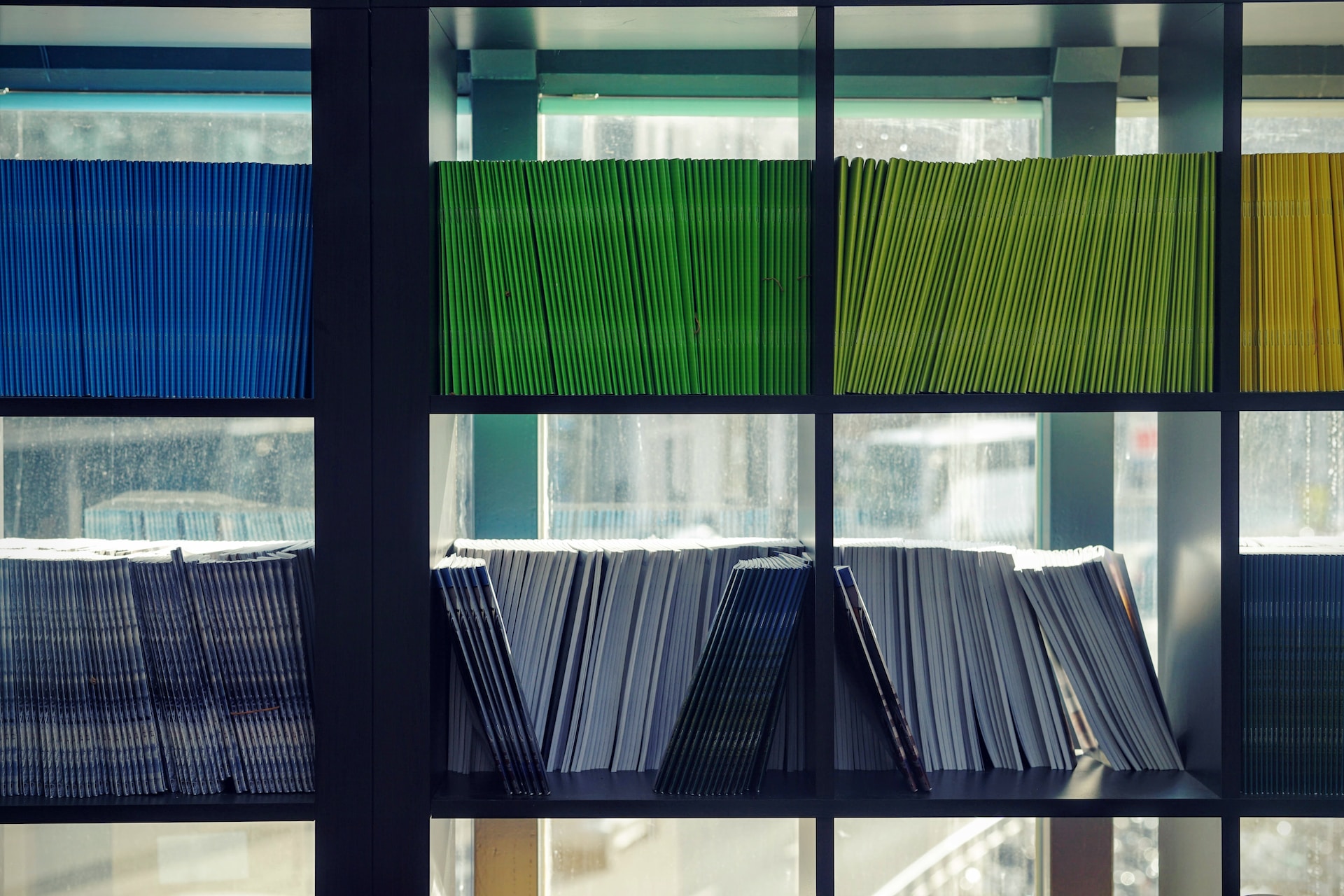
24 May Know Your Binding Options: Perfect Binding vs. Saddle Stitching
Perfect binding and saddle stitching are two of the most commonly used methods for binding printed pages. Each type of binding is durable and professional-looking, and can be used to bind a wide variety of materials, like catalogs, booklets, magazines, and more.
Each binding option offers unique advantages, and each has certain limitations. We put together this guide about perfect binding vs. saddle stitching to help you make the best choice.
Perfect Binding
Picture a paperback book with a flat spine—that’s perfect binding. With this technique, the spine is created by folding part of the cover, the pages are glued to the small section that makes up the spine, then the edges of the pages are trimmed. Perfect binding is most commonly used for books, magazines, and product catalogs.
Pros:
- You can print on the spine.
- Perfect binding allows for wrap-around designs.
- It’s aesthetically pleasing—there are no staples, stitching, or seams.
- Strong, flexible glue makes the product long-lasting.
- It can be used to bind hundreds of pages (with a maximum of about 400).
Cons:
- The final product does not open flat, so you lose design space in the inner margins and readers can’t use it hands-free.
- It’s typically more expensive than saddle-stitching, because glue costs more than staples.
Saddle Stitching
For the saddle stitching method, picture a comic book or booklet. The sheets of paper are folded in half, then stapled along the fold to create a spine. This method gets its name because the sheets rest on top of what looks like a saddle when they are “stitched” together with the staples. The maximum number of pages for saddle stitching is generally 76, but can vary based on many factors. This limit ensures that the final product will be able to open and lay flat.
Pros:
- Because no glue is used, it’s the less expensive option.
- Turnaround times are typically faster than for perfect binding, because the process is simpler.
- It works well for direct mailers, because the product weighs less.
- It can lay flat for hands-free reading (ideal for manuals, cookbooks, etc.).
- Saddle stitching can be used for a variety of differently-sized products, from coupon books to wall calendars.
Cons
- Saddle stitching can only be used for page counts that are multiples of four, because one double-sided page is folded and stapled to create four pages.
- Stapling isn’t as durable as glue, so saddle-stitched products typically don’t last as long as perfect-bound products do.
Perfect Binding vs. Saddle Stitching—Which One Should You Choose?
The most important factor to consider when choosing between perfect binding and saddle stitching is your page count. If your project has 76 pages or less (including the covers) then it’s more cost-effective to go with saddle stitching.
Because higher page counts cannot be saddle stitched, you’ll have to choose perfect binding if you have more than 76 pages. Perfect binding is also a good choice if your page count isn’t a multiple of four, because otherwise, you’ll be left with blank pages.
Your Local Print Shop in Tempe, Arizona
Do you have a project that’s ready for printing and binding? At Mousegraphics, we offer perfect binding as well as saddle stitching printing options. Our print professionals can help you choose the best binding and perfect materials for your project. Call us at 480-470-7438 today to request a quote.
Images used under creative commons license – commercial use (5/24/2023). Photo by Maarten van den Heuvel on Unsplash



